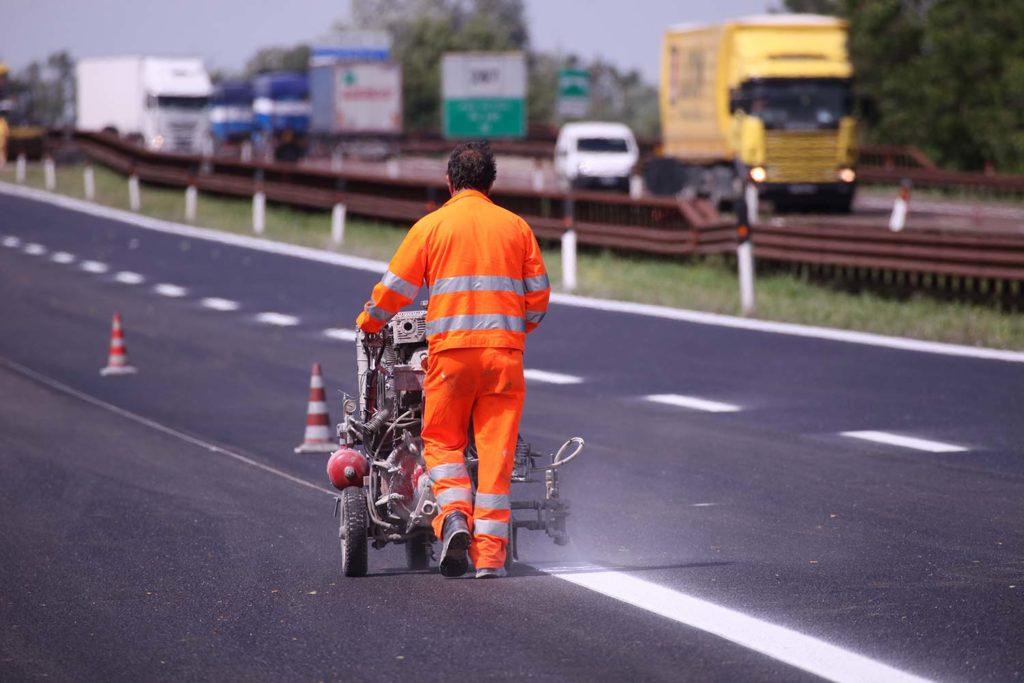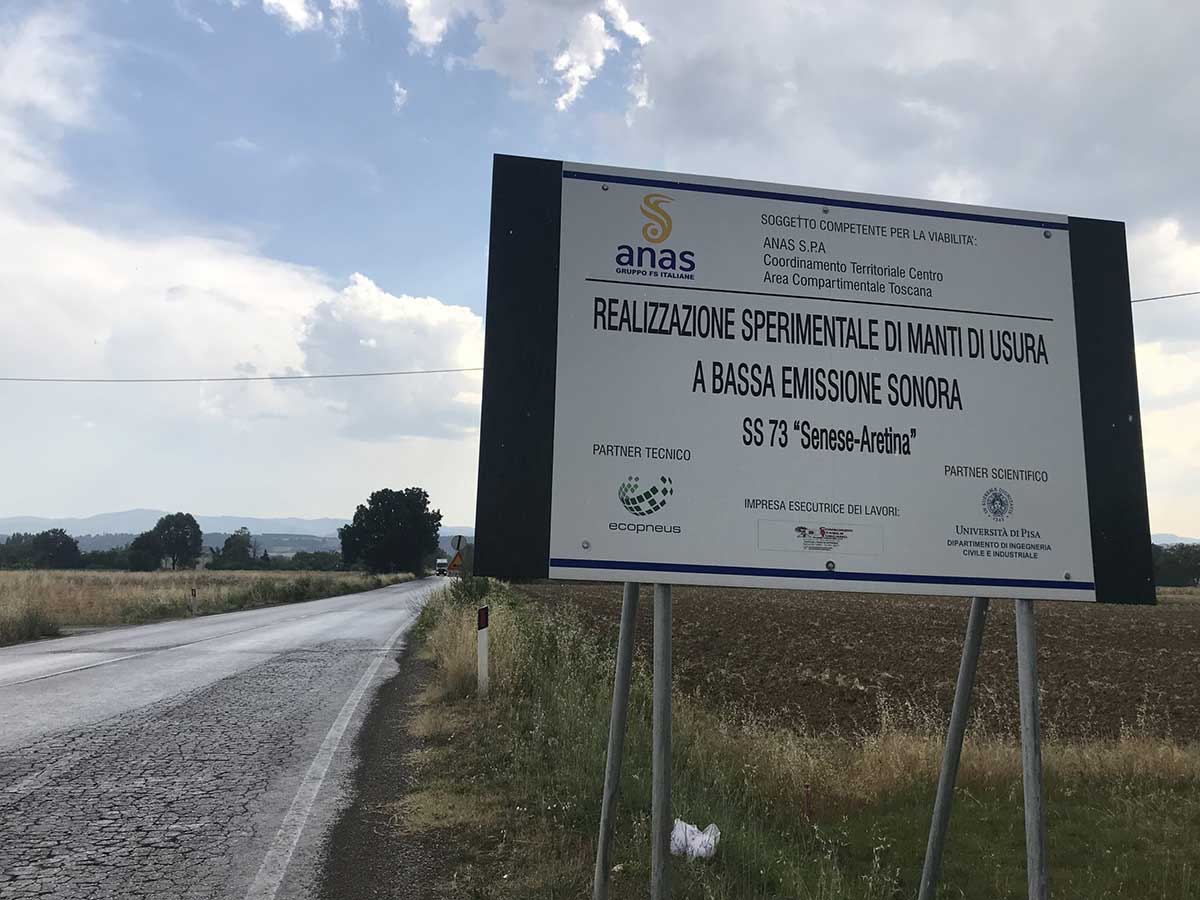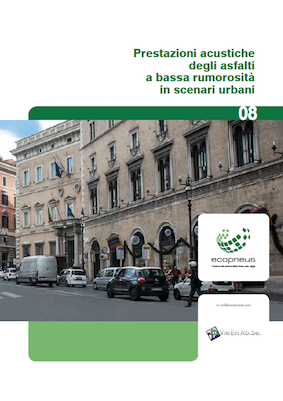Modified Asphalts in the context of the circular economy

The environmental sustainability of the road network building or maintenance interventions is constantly growing in importance also in the light of the increasing attention of Institutions, companies and the Public Opinion to all environmental issues in general.
Although the European Union has identified “efficiency and saving in the use of resources”, the “reduction of the use of harmful substances” and the “quantitative reduction of waste produced” as the main objectives to achieve environmental sustainability, the solutions implemented in the management of the Italian road networks are often far from a sustainable vision for what concerns road designing, building, maintenance, and recovery.
All this, despite the fact that the technologies already available on the market allow to produce highly-performing superstructures and road surfaces, not only with reference to durability, resistance to wear and weather conditions, but also with reference to reduction of the related environmental impacts along all the surface life cycle, following a Life Cycle Assessment (LCA) approach.
On top of assuring the surface functional efficiency, the design, building and maintenance phases must, then, have the following objectives:
- reduction in interventions in time;
- reduction in harmful gas emissions;
- reduction in energy consumption;
- reduction in the use of non-renewable virgin raw materials;
- reduction in the use of landfills.
Modified asphalts for an effective management of financial resources
 In this respect, the use of rubber powder derived from the recovery of ELTs – End-of-Life Tyres – for the production of asphalts modified with recycled rubber, fully complies with the European sustainability objectives, as it allows to obtain important environmental benefits and an efficient management of road infrastructure. Indeed, less maintenance, a reduced use of virgin raw materials, and a reduction in energy consumption are reflected in a reduction in the overall costs of the structure in the medium-long term. In addition to this, it is possible to rely on a road surface with excellent and long-lasting mechanical performances.
In this respect, the use of rubber powder derived from the recovery of ELTs – End-of-Life Tyres – for the production of asphalts modified with recycled rubber, fully complies with the European sustainability objectives, as it allows to obtain important environmental benefits and an efficient management of road infrastructure. Indeed, less maintenance, a reduced use of virgin raw materials, and a reduction in energy consumption are reflected in a reduction in the overall costs of the structure in the medium-long term. In addition to this, it is possible to rely on a road surface with excellent and long-lasting mechanical performances.
Indeed, if the need of keeping initial costs down has resulted in the fact that extra-ordinary interventions have often become the only tool in the hands of the Public Administrations for repairing serious damage, thanks to recycled rubber modified asphalts, it is now possible to make road surfaces with a use life that is up to 3 times higher than a traditional surface.
The costs for their implementation are basically identical to the ones paid for the creation of road surfaces that use bitumen modified with polymers. However, differently to the traditional technology, modified asphalts allow for the recovery of important second raw materials, a longer life, lower noise generation, and a reduction in maintenance costs. All this implies lower road management costs.
The Public Administration’s acoustic action and renovation plans
Some Italian Regional Bodies have introduced such applications into their strategies for noise management and against noise pollution – as required by the European Union.

In particular, the Regions of Trentino-Alto Adige and Tuscany have already implemented annual programmes for the reduction of noise emissions that currently use the technology of conglomerates modified with ELT-derived powders. In addition to noise reduction, these modified asphalts allow also to extend the durability and maintenance of the functional characteristics of the surfaces made with this technology.
Many other bodies, in particular provincial ones, use such technologies for the reduction of noise coefficients and for the reaching of better mechanical and environmental performances on occasion of specific requalification interventions of road surfaces, even if they have not implemented annual intervention plans yet.
Ecopneus has been the protagonist of several noise monitoring campaigns. In the course of the years, it has commissioned acoustic readings of the noise emissions caused by the rolling of tyres on the road to Universities and main Italian and European research centres.
The Special Tender Specifications containing the information and the technical specifications necessary for drafting the same Tender Specifications have been described in the Technical Framework made by Ecopneus in collaboration with the University of Pisa, entitled “wear layers with rubber powder for urban viability road surfaces”. This is a useful tool at the disposal of the operators of the sector for the designing and building of this particular type of wear layer.
Cassa Depositi e Prestiti supports innovation
The environmental and technological value of asphalts modified with recycled rubber has been appreciated also by Cassa Depositi e Prestiti. Indeed, this body has recently financed a wide requalification intervention of the roads of a Council in Lombardy , precisely thanks to the functional and environmental characteristics of the adopted solution.
For further reading

The technical handbooks on modified asphalts
In collaboration with universities and research centres, Ecopneus has promoted a series of handbooks where technical aspects, case histories, formulations, and performances of the various typologies of rubberised asphalt are scientifically presented. The objective is to favour the circulation of information and technical updates among all the subjects of the Italian asphalt chain. In its turn, this greater circulation of information aims at leading to a wider use of this valid application on our roads. Download them all!
08. Prestazioni acustiche degli asfalti modificati in scenari urbani
13. Guida per la produzione di bitumi con polverino di gomma da PFU
16. La Variante Canali di Reggio Emilia: una strada green
17: Strati di usura con polverino da PFU per la viabilità urbana

 Collect ELT
Collect ELT